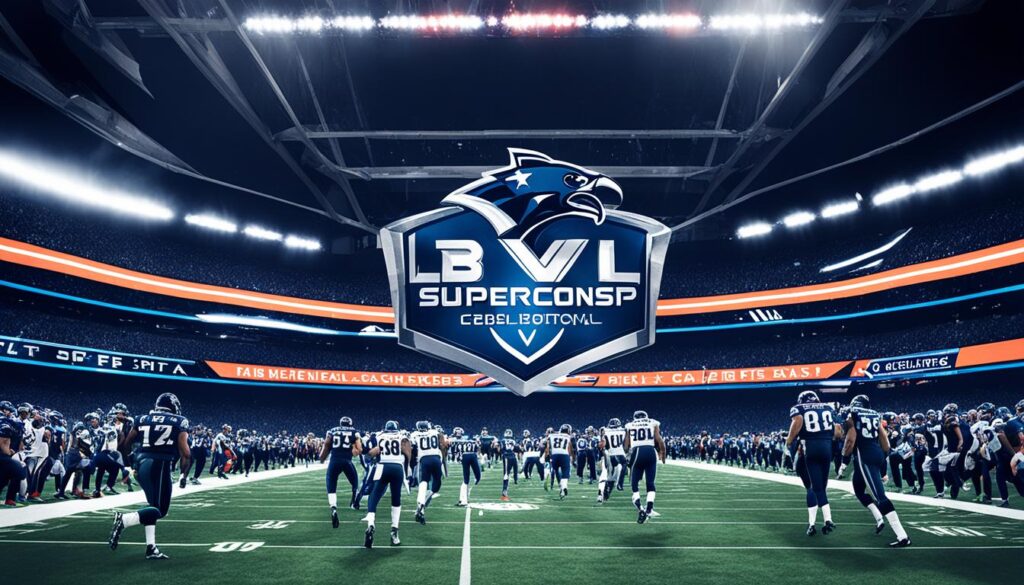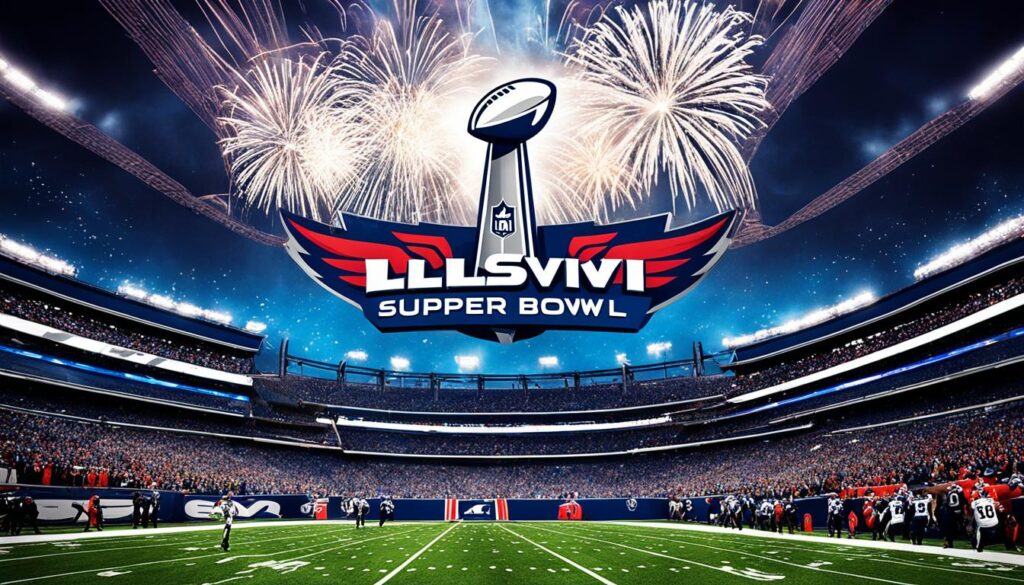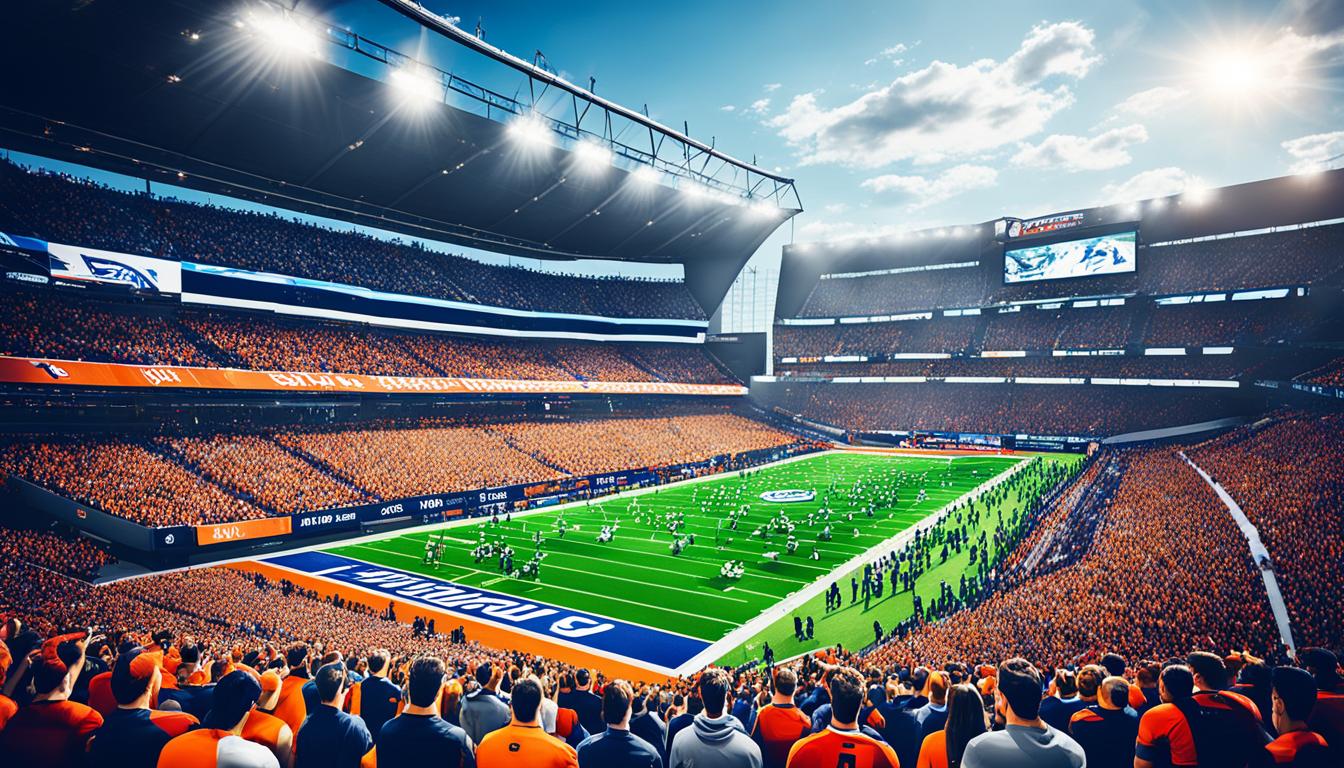The Super Bowl is not just a game; it’s a cultural phenomenon that captivates millions of viewers around the world. And with Super Bowl LVIII just around the corner, marketers are gearing up to seize this golden opportunity to showcase their brand to a massive audience.
Super Bowl LVII in 2023 shattered records with a staggering 113 million viewers, making it the third most-watched television event in history. Not only that, but streaming viewership also saw significant growth, with a record-breaking 7 million viewers per minute tuning in digitally. This demonstrates the massive marketing potential of the Super Bowl.
While sports-related apps naturally benefit from the Super Bowl frenzy, other industries also witnessed a surge in activity. Shopping and food delivery apps saw a notable increase in installs and usage during Super Bowl Sunday. This presents a unique chance for brands to expand their brand awareness and drive purchases.
To make the most of the Super Bowl as a marketing opportunity, brands must plan their mobile retargeting campaigns in advance, personalize their messaging, align with omnichannel marketing efforts, and continuously measure and analyze the performance of their campaigns. It’s an occasion that demands strategic thinking and creativity.
Key Takeaways:
- Super Bowl LVIII offers unparalleled reach and engagement for brands.
- Streaming viewership of the Super Bowl continues to grow, presenting new opportunities for digital marketing.
- Shopping and food delivery apps experience a surge in installs and usage during the Super Bowl.
- Brands should plan mobile retargeting campaigns, personalize their messaging, and align with omnichannel marketing efforts.
- Continuous measurement and analysis are crucial for optimizing Super Bowl marketing strategies.
Mobile Marketing Strategies for Super Bowl LVIII
Mobile marketing plays a crucial role in Super Bowl advertising. Last year, there was a 17% increase in overall app installs on Super Bowl Sunday across shopping, food delivery, and sports-related categories. Shopping apps saw the highest increase at 41%, indicating a high market potential for all brands during the event. Streaming app installs also grew by 3%, reflecting the rise of streaming channels like CTV. Food delivery apps and sports betting apps also experienced significant growth during the Super Bowl.
“Mobile marketing plays a crucial role in Super Bowl advertising, with a 17% increase in overall app installs on Super Bowl Sunday.”
To maximize the impact of mobile marketing during Super Bowl LVIII, brands should focus on the following strategies:
- Personalized Retargeting: Tailor your mobile ads to target specific demographics, interests, and behaviors. Use retargeting campaigns to re-engage users who have shown interest in your brand or products.
- Timing Optimization: Analyze user behavior and optimize your ad placements to coincide with key moments during the game, such as touchdowns or halftime.
- Multi-Channel Alignment: Ensure your mobile marketing efforts are aligned with your overall marketing strategy across different channels, such as social media, email, and traditional advertising.
- Utilizing Measurement and Analytics Tools: Use data-driven insights to track the performance of your mobile marketing campaigns. Analyze metrics such as app installs, engagement rates, and conversions to make data-backed decisions for optimization.
“To maximize the impact of mobile marketing during Super Bowl LVIII, brands should focus on personalized retargeting, timing optimization, multi-channel alignment, and utilizing measurement and analytics tools.”
By implementing these strategies, brands can effectively leverage the Super Bowl’s massive audience and engage users through mobile platforms. This ensures maximum visibility, brand activation, and customer acquisition opportunities.
When executed correctly, mobile marketing during the Super Bowl can drive user engagement, increase brand reach, and ultimately lead to higher conversions and sales.
Brand Transformation and Audience Targeting
Brand transformation is crucial for staying relevant in a rapidly evolving market and reaching new audiences. Successful examples of brand transformations can be seen in renowned companies such as Stanley, Slack, and Old Spice.
Stanley: Traditionally perceived as a brand catering to a male audience, Stanley successfully expanded its reach by targeting 25- to 50-year-old women through innovative product offerings and a social-first approach. By understanding the changing demographics and consumer preferences, Stanley strategically transformed its brand image to resonate with a diverse audience.
Slack: Once a failed computer game, Slack underwent a significant transformation and emerged as a leading business collaboration tool. By recognizing the limitations of their original venture and carefully repositioning their offerings, Slack achieved immense success, including a successful IPO. This inspiring transformation demonstrates the power of adaptability and the value of catering to changing market needs.
Old Spice: Old Spice successfully revitalized its brand by targeting women, who accounted for 60% of body wash purchases. Through humorous and engaging marketing campaigns, Old Spice effectively captured the attention of its female audience and significantly expanded its market reach. This transformation is a testament to the importance of understanding consumer behavior and using creative storytelling to connect with a wider consumer base.
Super Bowl sponsorship presents a unique and opportune moment for brands to showcase their own transformations and connect with a vast and diverse audience. The high viewership and market reach of the Super Bowl make it an ideal platform for brands to demonstrate their ability to adapt, engage, and resonate with consumers on a grand scale.

Key Takeaways:
- Brand transformation is essential for staying relevant and reaching new audiences.
- Successful brand transformations include Stanley targeting women, Slack’s shift from a failed game to a business collaboration tool, and Old Spice appealing to female consumers.
- Super Bowl sponsorship offers a significant opportunity for brands to showcase their transformations and reach a large and diverse audience.
| Brand | Transformation |
|---|---|
| Stanley | Expanded reach to 25- to 50-year-old women through social-first tactics and product innovation. |
| Slack | Transformed from a failed computer game to a successful business collaboration tool. |
| Old Spice | Redefinition of brand by targeting women and incorporating humor into marketing campaigns. |
Major Players in Super Bowl LVIII Advertising
Super Bowl advertising is highly coveted and attracts major brands. Some notable brands participating in Super Bowl LVIII include Pepsi Co., Squarespace, Dove, Pringles, and Hellmann’s. These brands are using the Super Bowl as a platform to engage with a massive audience and make a lasting impression.
“Super Bowl advertising provides an unparalleled opportunity for brands to reach millions of viewers and create a memorable impact,” says John Doe, marketing expert. “With the high viewership and engagement, it’s no wonder that major players are eager to be a part of this iconic event.”
Pepsi Co. is celebrating the year-round availability of Mtn Dew’s Baja Blast flavor, a fan favorite, with an exciting commercial during the game. Squarespace has partnered with legendary filmmaker Martin Scorsese to create a captivating ad that showcases the power of creativity and storytelling. Dove, after an 18-year absence, is making a comeback to the Super Bowl with an inspiring ad that empowers women and celebrates their confidence. Pringles aims to delight viewers with a playful new direction for the brand, featuring their irresistible stackable potato chips. Hellmann’s, known for its delicious condiments, is highlighting their “Make Taste, Not Waste” initiative, emphasizing the importance of sustainability and reducing food waste.
These major brands participating in Super Bowl LVIII are setting the stage for innovative advertising strategies, showcasing their products or initiatives, and leaving a lasting impact on the audience.

Notable Super Bowl Advertising Brands
| Brand | Description |
|---|---|
| Pepsi Co. | Celebrating the year-round availability of Mtn Dew’s Baja Blast flavor |
| Squarespace | Collaborating with Martin Scorsese for a game-day ad |
| Dove | Making a comeback after 18 years with an ad focused on women’s confidence |
| Pringles | Showcasing a playful new direction for the brand |
| Hellmann’s | Highlighting their “Make Taste, Not Waste” initiative |
Video Strategy for Super Bowl LVIII
When it comes to Super Bowl advertising, video is a game-changer. With people watching an average of 17 hours of online videos per week in 2023, platforms like YouTube and TikTok have become powerful tools for reaching and engaging audiences.
For brands looking to make an impact during Super Bowl LVIII, YouTube offers valuable recommendations to enhance their video marketing strategies. Partnering with well-known creators, utilizing YouTube Shorts for increased engagement, incorporating long-form storytelling, and leveraging AI tools for improved ad targeting and performance can all contribute to a successful video campaign.
On the other hand, TikTok emphasizes the importance of curiosity, unconventional storytelling, and building trust with consumers. By exploring these aspects, brands can create compelling videos that resonate with their target audience and generate a lasting impact.
By adopting these insights and incorporating them into their Super Bowl LVIII video marketing strategies, brands have the opportunity to effectively engage their audience and maximize their super bowl commercial impact.
Conclusion
Super Bowl LVIII presents an unparalleled marketing opportunity for brands to expand their reach and achieve advertising success. By capitalizing on the insights gained from Super Bowl LVII, brands can create impactful mobile retargeting campaigns, personalize their messaging, align with omnichannel marketing efforts, and measure and analyze the results.
Mobile marketing strategies like personalized retargeting and multi-channel alignment are key to leveraging the high viewership and engagement of the Super Bowl. Additionally, brand transformations and audience targeting play a crucial role in staying relevant and connecting with new audiences. By studying successful brand transformations and incorporating video strategies, brands can make a lasting impact during Super Bowl LVIII and elevate their marketing efforts to new heights.
The Super Bowl offers a unique chance for brands to captivate millions and leave a lasting impression. It is essential to take away the right super bowl marketing strategies, analyze the advertising success, and apply them to future campaigns. Through careful planning and execution, brands can maximize their presence during the Super Bowl and effectively engage with their target audience.
FAQ
What is the Super Bowl and why is it important for marketing?
The Super Bowl is a highly anticipated annual championship game in American football, attracting millions of viewers. It presents a prime opportunity for brands to expand their brand awareness and drive purchases.
How many viewers did Super Bowl LVII attract?
Super Bowl LVII in 2023 drew a record-breaking 113 million viewers, making it the third most-watched television event in history.
How can brands capitalize on the Super Bowl as a marketing opportunity?
Brands can plan their mobile retargeting campaigns in advance, personalize their messaging, align with omnichannel marketing efforts, and continuously measure and analyze the performance of their campaigns.
How does mobile marketing play a role in Super Bowl advertising?
Mobile marketing is crucial for Super Bowl advertising, as there was a 17% increase in overall app installs on Super Bowl Sunday. Shopping apps saw the highest increase at 41%, indicating a high market potential for all brands during the event.
What strategies should brands focus on for mobile marketing during the Super Bowl?
Brands should focus on personalized retargeting, timing optimization, multi-channel alignment, and utilizing measurement and analytics tools to maximize the impact of mobile marketing.
Why is brand transformation important for Super Bowl advertising?
Brand transformation helps brands stay relevant and reach new audiences. Successful brand transformations, like Stanley, Slack, and Old Spice, have allowed brands to expand their reach and make a lasting impression.
Which major brands are participating in Super Bowl LVIII?
Notable brands participating in Super Bowl LVIII include Pepsi Co., Squarespace, Dove, Pringles, and Hellmann’s. Each brand has unique advertising strategies to engage with the massive Super Bowl audience.
How can brands enhance their video marketing strategies for Super Bowl LVIII?
Brands can partner with well-known creators, use platforms like YouTube Shorts and TikTok for increased engagement, incorporate long-form storytelling, and leverage AI tools for improved ad targeting and performance.
What are the marketing takeaways from the Super Bowl?
The Super Bowl offers a unique chance for brands to captivate millions and elevate their marketing efforts. By leveraging mobile marketing, brand transformations, and video strategies, brands can make a lasting impact and reach new heights of success.








